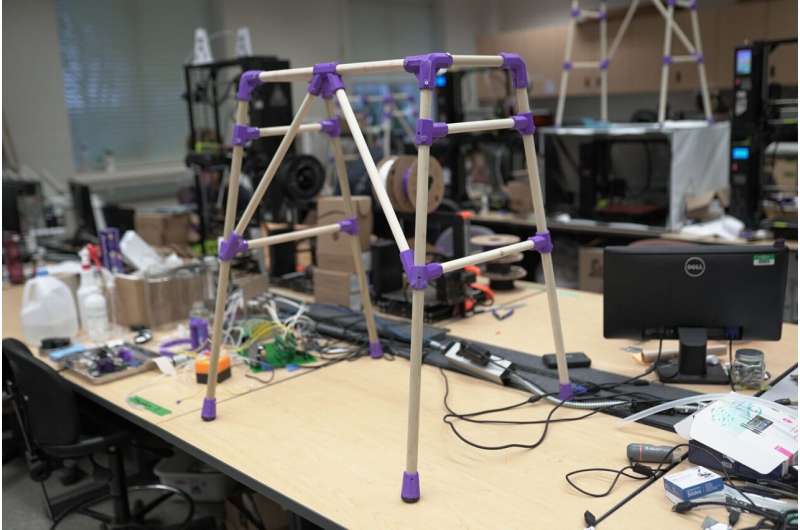
University of Western Ontario engineers created a new, static four-legged walk that can be built from fasteners and materials commonly found in hardware stores such as wooden dowels. The joints were all 3D printed and the entire design was open-source. It is available for modification and redistribution online.
The mobility problems of more than 10% of adults are due to financial constraints. This is especially true for seniors and people living in poorer regions.
“Unfortunately, there are still places in the world, whether we’re talking about isolated communities in the north, or developing countries, where people simply don’t have access to medical technologies or assistive tools like a walker,” said Joshua Pearce, the John M. Thompson Chair in Information Technology and Innovation at Western’s Thompson Centre for Engineering Leadership & Innovation. For many, financial restrictions are a major issue, even for those living in developed cities.
Pearce’s new open-source walkers, developed with his collaborators Jacob Reeves of the University of Michigan and Anita So from the Integrated Engineering Department, allow people to make their own mobility devices that are significantly cheaper than commercial models which cost between $65 and $150. The walker will be available for production around the globe, increasing accessibility and equity.
The biggest motivation for me is “The real big motivator” [in developing the walker] So. “I was able make even a slight difference in someone else’s life all over the world as they will be able directly benefit from this open-source, low-cost design.”
The current design that can be customized for any user should be safe enough to carry the weight of an individual between 78.9 to 93.35 kilograms (approx. The weight range is approximately 174-206 pounds.
So, as part of their research and development, asked people questions about their own walkers. They wanted to know about how they used them, whether they were satisfied or frustrated, and what problems they encountered. Western was able incorporate this valuable personal insight into the design of a lighter and more affordable walker.
So said, “We tried to solve the problem by using materials that are available globally to increase accessibility and simplify the design.” “In Canada we have an excellent health care system that offers financial support to those who need these devices, but this is not the case in many other countries or for those living in isolated communities. “This walker is for everybody.”
The Western frugal team of biomedical innovators is behind this ambitious project. They are working to find ways to reduce inequities within Canadian and global health through the design, development, testing, and deployment of biomedical devices which meet the needs and requirements of communities.
The researchers are working on a set of 3D-printed crutches that can be printed open-source.
University of Western Ontario
Citation:
Open-source, 3D-printed walker lets people create their own customized mobility device (2023 June 8).
Retrieved on 8 June 2023
from https://medicalxpress.com/news/2023-06-3d-printed-open-source-walker-people-customizable.html
This document is protected by copyright. No fair trade is allowed, except for private research or study.
Parts may not be reproduced without permission. This content is only provided as information.